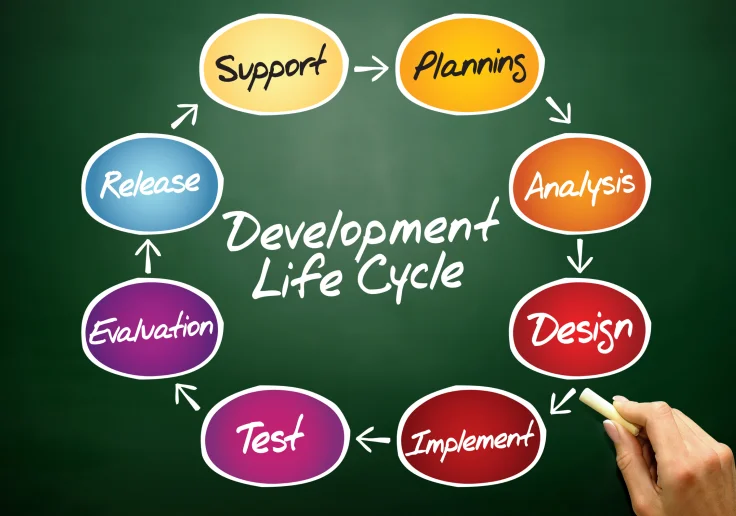Content
When it’s time to celebrate meeting a milestone, consider indulging in a team dinner or day out doing something fun together. And, now that you’ve figured out established practices that help you collaborate effectively, share those with other teams. The stages of task activity were labelled orientation to task, emotional response to task four stages of group development demands, open exchange of relevant interpretations, and emergence of solutions (Tuckman & Jensen, 2010). Charma provides One on Ones, Team Collaboration, Feedback, Recognition & Goals — all in one place. With Charma, you can guide team development remotely with intentional goal setting, online collaboration, and continuous feedback.

Tuckman’s theory is that every group moves through four stages on its way to becoming a high-performing team. By recognizing these stages, we can adapt our leadership style to the needs of the team. The next stage of group development is the storming stage. In this stage, team members are in the process of learning how to work together.
Scenario: You’re leading your team through the forming stage
It illustrates how teams in different fields undergo five similar stages of group development. Understanding the stages of team development enables you to build successful and high-performing teams. Reaching the performing stage is a major success and often precipitates some form of team learning. Team learning is a behavioral process of seeking, gathering, discussing, and implementing methods of team success.

They tend to move through a number of stages – forming, storming, norming, and performing – as group members establish roles, relationships and figure out how to work together. Once their efforts are under way, team members need clarity about their activities and goals, as well as explicit guidance about how they will work independently and collectively. This leads to a period known as storming—because it can involve brainstorming ideas and also because it usually causes disruption.
Scenario: You’re leading your team through the storming stage
In this stage of team development, team members fall into a rhythm as a cohesive taskforce. The skills of each member are validated and utilized to execute the necessary tasks. While conflict may still arise in this stage, it no longer spirals into dysfunction. The team can handle conflict and proceed with the project successfully. Storming is the most difficult and unproductive of the five stages of development, but it is nevertheless vital to the team development process. When team members are upset with themselves, the task, or each other, they learn what causes the most dysfunction.

Disagreements are unavoidable on teams, especially when each person on the team has a different perspective on how to approach the issues the team encounters. When you all work in the same location, it can be easier to hash out problems quickly. On a remote team, you need to be more thoughtful about the tools and the processes that you use to identify and deal with disagreements. Many teams will continue to have bouts of “Storming” from time-to-time, for example, after an organisational change. Also, as team members leave and new team members join, the team might go back through the stages. To grow from this stage, team members need to build their collaborative ability.
At the Storming Stage:
Teams are social units, and like in any relationship, team members experience periods of adaptation, friction, and flourishing. This is why Bruce Tuckman’s stages of group development stand out among other theories of team building – this model just reflects the natural way teams form. The value of this theory is its simplicity and logic, so it can be very useful for leaders. As you build a new team, keep the stages of team development in mind so you can help individual team members reach their full potential and collaborate together effectively.

They may also be polite and nervous about how the team will gel. The apprehensive behavior usually arises because members are unsure about the project goals and their roles. However, once that’s explained, they’ll https://globalcloudteam.com/ adjust to the roles that await them. As the name suggests, team development entails training and supporting a group of individuals so that they work as a cohesive unit to realize the intended outcome.
Stage 2: Storming
The storming stage is where each individual’s personality and preferred way of working shows itself. Team members may also begin to test each other or their leader and try to stand out from the rest. Whether in person or via Zoom, the forming stage of team development remains relevant, as team members need to get to know each other and be assured of each other’s skills.
- Motivators would increase job satisfaction while the hygiene factors would reduce job dissatisfaction.
- The first stage is forming, which is when the members within the team first come together to meet.
- Team members may feel a variety of concerns about the team’s impending dissolution.
- These stages are steps in the team building process and are similar to team building best practices.
- Tuckman’s original work simply described the way he had observed groups evolve, whether they were conscious of it or not.
- The group development process is important because the system allows leaders to identify the correct stage of development and accurately assess the level of teamwork.
For example, if the project includes updating social media, sending email marketing campaigns, or even creating lead magnets, a tool like HubSpot is great for this level of marketing automation. Before committing to a tool, give your team some time to work with it and test it out to make sure it fits their needs. Lots of tools offer free trials, so use that time to experiment and check its compatibility with other products you use.
Stages of Team Development
Your team needs to communicate clearly and, rely on one another rather than turn on each other. This is a crucial point in team development where leaders can pinpoint bottlenecks, areas of improvement and couple them with team strengths to build forward momentum. This way, you can prepare for conversations that build trust while supporting your team and leading through each team development stage. It’s the time where your team learns about upcoming projects and structures. Here, it’s typical for teammates to feel excited, anxious, and curious about what lies ahead.
